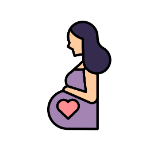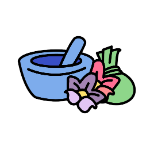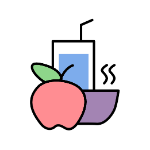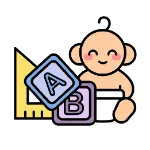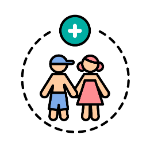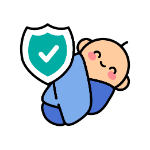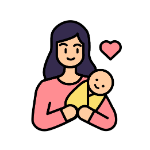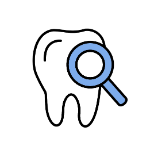
Childcare
A Guide On Introducing Your Baby To Solid Foods
10 min | Updated on 30-03-2023 by HappyPreggie
During the first 6 months of your baby’s life, they rely on the nutrients stored in their body from when they were in the womb and also through breastfeeding and/or infant formula. However, it decreases as they grow and hence why they need to start eating solid foods. There are many matters to take into consideration before starting on solids with your baby, such as the signs of readiness, baby weaning, force feeding and others. It is important to take advice, such as from experienced parents or even better, professionals such as your child’s paediatrician before deciding whether your baby is ready and what solid foods to give them.

Ms. Ye Ting, Founder of Simple Balance Nutrition and a certified Dietitian, will guide you on starting your baby with solid foods for easier feeding.
At one time, starting solids around 4 months was very common. Many parents believe starting solids will help their baby sleep through the night, so they initiate mealtime. Some parents think their baby is old enough to start eating solids, or their baby seems hungry a lot of the time, or their doctor or other health care professional recommended this. Poor sleep and fussiness at 4 months are different developmental milestones. This is not a sign your baby is ready for solids. Breastmilk or formula still meets 100% of the baby’s nutritional needs at this age.
In fact, introducing solids too early can result in babies not drinking an adequate amount of breast milk or formula, which can develop poor nutrition. Also, studies suggest that introducing solids to a baby’s diet too early may increase the risk of chronic diseases like diabetes, obesity, eczema and celiac disease later in life.
The current and newest recommendation from trusted health authorities like the American Academy of Paediatrics (AAP), World Health Organisation (WHO), Canadian Paediatric Society and Health Canada is to start babies on solids around six months when they are showing signs of developmental readiness.
Some babies will show signs before 6 months and some slightly after. Parents should be aware that starting solids at 4 months of age without the signs of readiness present is not a good idea. Most babies show all the readiness signs closer to the 5 to the 6-month mark.
Signs baby is ready for solids:
When your baby is close to the 6-month mark, start watching for signs the baby is ready for solids. This will look slightly different for every baby, but there are many common signs you can look for.

Traditional weaning (TW) is introducing smooth puree foods spoon-fed by a parent or caregiver. Food texture is gradually getting thicker and lumpier and finally progressing to solid family foods around 9-12 months of age.
Baby Led Weaning (BLW) is the process of letting the baby self-feed themselves via finger foods. These foods are generally similar, or the same, as the rest of the family foods you are serving. Most of the time, the texture of the family foods needs to be prepared in a safe, age-appropriate way. This feeding approach allows the baby to practice fine motor skills by introducing all different foods, textures and flavours. The feeding role of parents/caregivers is to provide the what, where and when of food but the baby gets to choose what they eat or if they eat at all.
Since BLW involves allowing the baby to self-feed. This means that your baby might not eat as much food as if they were eating purees when they first start. It is because they are instinctively listening to their body when it comes to hunger and satiety cues.
A misconception about BLW is that purees should be avoided. Purees are a texture of food, just like any other, and are important for the baby to learn and practice.
Which one is better?
Every baby is different, and every parental feeding style is different, choose the feeding method you feel most comfortable and confident with. A comfortable, relaxed, confident parent will produce a more relaxed baby.
The most important part of starting solids with your baby is creating a stress-free eating environment while ensuring they get all their essential nutrition for appropriate growth and development.

Forcing children to eat is not a good idea. It can be traumatic and implant a negative relationship with food.
The risks involved in force-feeding your children:
You should avoid giving infants the following foods:

The latest evidence for starting high allergen foods is to start them as early as possible, usually right around the time you introduce solid foods.
High allergen foods include:
Delayed introduction of these foods has been shown to increase the chance of developing food allergies. It is best to practice introducing common allergens one at a time, a few days apart from another high allergen food, but there is no specific order that you need to follow.
Allergic reactions usually occur quickly, within minutes to a couple of hours after eating. However, a rare type of allergy may occur many hours after a food is ingested. Therefore, I recommend keeping track of these food introductions with daily food journals. Below are the symptoms of an allergic reaction.
Symptoms of mild allergic reactions - can include ONE of the following (more than one would constitute a more severe reaction):
For mild symptoms, it is recommended to monitor your child very closely and seek medical attention if any further concerns develop. Consider taking photos of any skin reactions. Avoid the specific food that was consumed until you have a chance to speak with your physician.
If there are any concerns for severe allergic symptoms, please seek medical attention immediately. If your child already has known food allergies and carries an epinephrine auto injector, this should be administered without delay.
 (Image credits to Fortified Family)
(Image credits to Fortified Family)
When introducing solid foods, one of the parent's biggest worries is the possibility of the baby choking, especially if they’ve chosen to do baby-led weaning.
It’s important that all parents and caregivers should be aware of the difference between gagging and choking and how to help your child in an emergency.
Gagging is a normal developmental response in the weaning process. Gagging is the natural way your baby's body protects itself from choking. So, coughing, gagging and expelling food will be common during the first few months of weaning.
What does gagging look and sound like?
When a baby is gagging, they will loudly cough, sputter, gurgle, and make gagging noises. Their tongue will be thrust forward, and they’ll spit up the food they were eating. Sometimes, they’ll vomit the food up. When a baby is gagging, don’t intervene! Let the baby work through the gagging on their own. If you try to remove the food, you could push it back further and lodge it in their throat. This will make things worse and may even lead to choking.
Choking is a sign that your baby’s airway is blocked. A piece of food has partially or fully blocked their windpipe, and their gag reflex didn’t successfully force it out to protect them. Choking means your baby is in danger, and it could be life-threatening.
What does choking look and sound like?
When a baby is choking, their face and lips will usually turn blue. They won't be able to cry, make noises, and may be completely silent. Also, they will have trouble coughing, or may not be able to cough at all. They'll usually have trouble breathing. If you see these signs, the baby is choking and will need immediate assistance from you. Perform baby CPR to stop the choking.
We all have heard of the 3-day wait rule before introducing other solid foods to babies. It simply means you have to wait 3-5 days whenever you introduce a new food item to your baby. This has been thought to help parents discover if the baby is allergic or intolerant to a specific food. There is no evidence or research to back this recommendation up.
Waiting unnecessarily long periods between new foods, babies won’t get exposed to a greater variety of foods, flavours, tastes and textures. Since children often slip into picky eating during the toddler years, it’s best to introduce as many foods, flavours, tastes and textures as you can, so we can prevent picky eating. Thus, introducing one low-risk food per day is perfectly safe for your baby.

Yes! Babies can chew without teeth. Their gums can mash and grind most foods quite well. A baby’s molars don’t come in until after their first birthday, so if we waited to give the baby chewable foods until then, your baby would miss months of valuable time to practice biting and chewing.
For decades, parents have used infant rice cereal as their baby's first food because they are safe, convenient, shelf-stable and less likely to cause allergies than other grains, particularly wheat.
However, parents should be aware that rice-containing foods do contain arsenic. Arsenic is a known carcinogen and can also cause cardiovascular, respiratory, metabolic and immune-related health issues. Therefore, rice cereal isn’t the best first food for babies, instead, iron-rich foods should be introduced. That’s because a baby’s iron needs increase around six months of age. The iron found in rice cereal is non-heme iron, which doesn’t absorb well. Heme iron, found in meat, fish, eggs and poultry, is easy to absorb.
If infant cereal is still your baby’s first food option, serve iron-fortified cereals made from amaranth, barley, buckwheat, oats, quinoa, or wheat, all of which have lower levels of arsenic than rice. Also, don’t forget to introduce a variety of iron-rich foods to your baby at the same time.
Q10. What key nutrients could impact a baby’s brain development?

Foods containing essential nutrients are important for a baby’s brain development and function. A Diet rich in the key nutrients listed below can help optimise its function.
Traditional health care does not provide parents with the education they need when it comes to feeding children. This leaves parents searching the internet for nutrition advice, and often that advice isn’t evidence-based. Finding a dietitian can help put you and your family on the path to less mealtime stress. A dietitian can help parents understand key signs of readiness, the best feeding method for their family and how to meet a baby’s unique nutrient needs for growth.

You don’t have to wait until you’re pregnant to start eating well. Following a healthy diet before you conceive can help boost your fertility, lower the risk of birth defects such as spina bifida and even reduce your chances of developing preeclampsia during pregnancy.
Food plays a very important role in building a healthy immune system. For instance, following a balanced diet rich in nutrients can offer protection against seasonal illness and other health problems.
Vegetables are a great source of antioxidants and vitamins that can help to boost children’s immune systems. Green leafy vegetables like broccoli, spinach, and kale are rich in iron and vitamin C. In addition, spinach is packed with nutrients like beta-carotene and antioxidants that improve our body’s disease-fighting ability. Also, ginger and garlic have vital anti-inflammatory properties and help maintain a healthy gut, which results in strengthening the immune system. Sweet potato, rich in vitamin B6, and pumpkin, which contains vitamin A, will also help develop a healthy immune system.
Other than food, stress and sleep can also affect children’s immunity. In addition to maintaining a proper diet, ensure that our children are getting enough sleep (preferably 8-10 hours). It is important to remember that a good sleep-wake schedule is proven to reduce levels of stress, which will help maintain a healthy immune system.
Introducing your baby to solid foods is a big milestone in their growth that should be taken seriously. Simply following other’s guides may not be enough, you should do your own research and experiment a little on which texture or taste they prefer. Read our articles for more knowledge on introducing babies to solids: Age-By-Age Feeding Guide To Feed Your Baby For The First Year and Why You Should Feed Your Baby Organic Baby Food.
Ms. Ye Ting, Founder of Simple Balance Nutrition and a certified Dietitian, will guide you on starting your baby with solid foods for easier feeding.
Q1. Why do some parents start solids when the baby is 4 months? What are the risks involved when solids are introduced earlier than 6 months?
At one time, starting solids around 4 months was very common. Many parents believe starting solids will help their baby sleep through the night, so they initiate mealtime. Some parents think their baby is old enough to start eating solids, or their baby seems hungry a lot of the time, or their doctor or other health care professional recommended this. Poor sleep and fussiness at 4 months are different developmental milestones. This is not a sign your baby is ready for solids. Breastmilk or formula still meets 100% of the baby’s nutritional needs at this age.
In fact, introducing solids too early can result in babies not drinking an adequate amount of breast milk or formula, which can develop poor nutrition. Also, studies suggest that introducing solids to a baby’s diet too early may increase the risk of chronic diseases like diabetes, obesity, eczema and celiac disease later in life.
The current and newest recommendation from trusted health authorities like the American Academy of Paediatrics (AAP), World Health Organisation (WHO), Canadian Paediatric Society and Health Canada is to start babies on solids around six months when they are showing signs of developmental readiness.
Some babies will show signs before 6 months and some slightly after. Parents should be aware that starting solids at 4 months of age without the signs of readiness present is not a good idea. Most babies show all the readiness signs closer to the 5 to the 6-month mark.
Signs baby is ready for solids:
When your baby is close to the 6-month mark, start watching for signs the baby is ready for solids. This will look slightly different for every baby, but there are many common signs you can look for.
- The absence of the tongue thrust reflex (they can control their tongue and do not stick out when given food)
- They can sit up (with support) and hold their own head up (without support)
- They show an interest in food others are eating
- They reach out for your food
- They can grasp and bring objects or food to their mouth
Q2. What’s the difference between baby-led weaning (BLW) and traditional weaning (TW)? Which one is better?
(Image credits to Happy Family Organics)
Traditional weaning (TW) is introducing smooth puree foods spoon-fed by a parent or caregiver. Food texture is gradually getting thicker and lumpier and finally progressing to solid family foods around 9-12 months of age.
Baby Led Weaning (BLW) is the process of letting the baby self-feed themselves via finger foods. These foods are generally similar, or the same, as the rest of the family foods you are serving. Most of the time, the texture of the family foods needs to be prepared in a safe, age-appropriate way. This feeding approach allows the baby to practice fine motor skills by introducing all different foods, textures and flavours. The feeding role of parents/caregivers is to provide the what, where and when of food but the baby gets to choose what they eat or if they eat at all.
Since BLW involves allowing the baby to self-feed. This means that your baby might not eat as much food as if they were eating purees when they first start. It is because they are instinctively listening to their body when it comes to hunger and satiety cues.
A misconception about BLW is that purees should be avoided. Purees are a texture of food, just like any other, and are important for the baby to learn and practice.
Which one is better?
Every baby is different, and every parental feeding style is different, choose the feeding method you feel most comfortable and confident with. A comfortable, relaxed, confident parent will produce a more relaxed baby.
The most important part of starting solids with your baby is creating a stress-free eating environment while ensuring they get all their essential nutrition for appropriate growth and development.
Q3. Many parents force-feed their kids by putting them under tremendous pressure. What are the risks involved in force-feeding?
(Image credits to SleepBaby.org)
Forcing children to eat is not a good idea. It can be traumatic and implant a negative relationship with food.
The risks involved in force-feeding your children:
- Food aversion
- Negative emotion
- Vomiting
- Eating disorder
Q4. What foods should I avoid feeding my baby before 1?
You should avoid giving infants the following foods:
- Honey or foods made with honey
- Cow's milk
- Choking hazards
Q5. When should I start high allergen foods? How do I know if my child is having an allergic reaction?
(Image credits to VeryWell Health)
The latest evidence for starting high allergen foods is to start them as early as possible, usually right around the time you introduce solid foods.
High allergen foods include:
- Milk
- Eggs
- Peanuts
- Tree nuts
- Fish
- Shellfish
- Soy
- Wheat
- Sesame
Delayed introduction of these foods has been shown to increase the chance of developing food allergies. It is best to practice introducing common allergens one at a time, a few days apart from another high allergen food, but there is no specific order that you need to follow.
Allergic reactions usually occur quickly, within minutes to a couple of hours after eating. However, a rare type of allergy may occur many hours after a food is ingested. Therefore, I recommend keeping track of these food introductions with daily food journals. Below are the symptoms of an allergic reaction.
Symptoms of mild allergic reactions - can include ONE of the following (more than one would constitute a more severe reaction):
- Itchy or runny nose, sneezing
- Itchy mouth
- A few isolated hives, mild itching
- Mild nausea or gastrointestinal discomfort
For mild symptoms, it is recommended to monitor your child very closely and seek medical attention if any further concerns develop. Consider taking photos of any skin reactions. Avoid the specific food that was consumed until you have a chance to speak with your physician.
- Symptoms of severe allergic reactions - more severe reactions may include any of the following, either alone or in combination:
- Shortness of breath, wheezing, repetitive cough
- Pale, ashen or bluish skin
- Swelling of face, lips, or tongue
- Widespread hives on the body
- Repetitive vomiting
- Sudden tiredness/lethargy/seeming limp
If there are any concerns for severe allergic symptoms, please seek medical attention immediately. If your child already has known food allergies and carries an epinephrine auto injector, this should be administered without delay.
Q6. I’m worried about my baby experiencing choking or gagging. How can I tell the difference between choking and gagging?
When introducing solid foods, one of the parent's biggest worries is the possibility of the baby choking, especially if they’ve chosen to do baby-led weaning.
It’s important that all parents and caregivers should be aware of the difference between gagging and choking and how to help your child in an emergency.
Gagging is a normal developmental response in the weaning process. Gagging is the natural way your baby's body protects itself from choking. So, coughing, gagging and expelling food will be common during the first few months of weaning.
What does gagging look and sound like?
When a baby is gagging, they will loudly cough, sputter, gurgle, and make gagging noises. Their tongue will be thrust forward, and they’ll spit up the food they were eating. Sometimes, they’ll vomit the food up. When a baby is gagging, don’t intervene! Let the baby work through the gagging on their own. If you try to remove the food, you could push it back further and lodge it in their throat. This will make things worse and may even lead to choking.
Choking is a sign that your baby’s airway is blocked. A piece of food has partially or fully blocked their windpipe, and their gag reflex didn’t successfully force it out to protect them. Choking means your baby is in danger, and it could be life-threatening.
What does choking look and sound like?
When a baby is choking, their face and lips will usually turn blue. They won't be able to cry, make noises, and may be completely silent. Also, they will have trouble coughing, or may not be able to cough at all. They'll usually have trouble breathing. If you see these signs, the baby is choking and will need immediate assistance from you. Perform baby CPR to stop the choking.
Q7. How long to wait between introducing new baby foods?
We all have heard of the 3-day wait rule before introducing other solid foods to babies. It simply means you have to wait 3-5 days whenever you introduce a new food item to your baby. This has been thought to help parents discover if the baby is allergic or intolerant to a specific food. There is no evidence or research to back this recommendation up.
Waiting unnecessarily long periods between new foods, babies won’t get exposed to a greater variety of foods, flavours, tastes and textures. Since children often slip into picky eating during the toddler years, it’s best to introduce as many foods, flavours, tastes and textures as you can, so we can prevent picky eating. Thus, introducing one low-risk food per day is perfectly safe for your baby.
Q8. Can babies chew without teeth?
(Image credits to FirstCry Parenting)
Yes! Babies can chew without teeth. Their gums can mash and grind most foods quite well. A baby’s molars don’t come in until after their first birthday, so if we waited to give the baby chewable foods until then, your baby would miss months of valuable time to practice biting and chewing.
Q9. Infant rice cereal is the best first food for babies.
For decades, parents have used infant rice cereal as their baby's first food because they are safe, convenient, shelf-stable and less likely to cause allergies than other grains, particularly wheat.
However, parents should be aware that rice-containing foods do contain arsenic. Arsenic is a known carcinogen and can also cause cardiovascular, respiratory, metabolic and immune-related health issues. Therefore, rice cereal isn’t the best first food for babies, instead, iron-rich foods should be introduced. That’s because a baby’s iron needs increase around six months of age. The iron found in rice cereal is non-heme iron, which doesn’t absorb well. Heme iron, found in meat, fish, eggs and poultry, is easy to absorb.
If infant cereal is still your baby’s first food option, serve iron-fortified cereals made from amaranth, barley, buckwheat, oats, quinoa, or wheat, all of which have lower levels of arsenic than rice. Also, don’t forget to introduce a variety of iron-rich foods to your baby at the same time.
Q10. What key nutrients could impact a baby’s brain development?
(Image credits to Health Fitness Revolution)
Foods containing essential nutrients are important for a baby’s brain development and function. A Diet rich in the key nutrients listed below can help optimise its function.
- Protein
- Zinc
- Iron
- Vitamin D
- DHA
Q11. How can a dietitian help parents in introducing and planning solid foods for babies?
Traditional health care does not provide parents with the education they need when it comes to feeding children. This leaves parents searching the internet for nutrition advice, and often that advice isn’t evidence-based. Finding a dietitian can help put you and your family on the path to less mealtime stress. A dietitian can help parents understand key signs of readiness, the best feeding method for their family and how to meet a baby’s unique nutrient needs for growth.
Q12. When trying to conceive, what are the recommended diet plans that are best for fertility?
(Image credits to iStock)
You don’t have to wait until you’re pregnant to start eating well. Following a healthy diet before you conceive can help boost your fertility, lower the risk of birth defects such as spina bifida and even reduce your chances of developing preeclampsia during pregnancy.
- choose whole grain high fibre foods, including whole grain bread, brown rice, quinoa, oatmeal and whole wheat pasta
- eat foods rich in antioxidants, such as fruit and vegetables, nuts, seeds, lentils and beans
- eat more unsaturated ‘good’ fats, such as avocados, nuts, seeds and oily fish
- avoid saturated ‘bad’ fats, such as fried foods, pastry, biscuits, pies and cakes
- avoid sugary food and drink, such as sweets, biscuits, cakes and fizzy drinks
Q13. Does food play a major role in immunity? Which vegetables help to boost children’s immune system?
Food plays a very important role in building a healthy immune system. For instance, following a balanced diet rich in nutrients can offer protection against seasonal illness and other health problems.
Vegetables are a great source of antioxidants and vitamins that can help to boost children’s immune systems. Green leafy vegetables like broccoli, spinach, and kale are rich in iron and vitamin C. In addition, spinach is packed with nutrients like beta-carotene and antioxidants that improve our body’s disease-fighting ability. Also, ginger and garlic have vital anti-inflammatory properties and help maintain a healthy gut, which results in strengthening the immune system. Sweet potato, rich in vitamin B6, and pumpkin, which contains vitamin A, will also help develop a healthy immune system.
Other than food, stress and sleep can also affect children’s immunity. In addition to maintaining a proper diet, ensure that our children are getting enough sleep (preferably 8-10 hours). It is important to remember that a good sleep-wake schedule is proven to reduce levels of stress, which will help maintain a healthy immune system.
Introducing your baby to solid foods is a big milestone in their growth that should be taken seriously. Simply following other’s guides may not be enough, you should do your own research and experiment a little on which texture or taste they prefer. Read our articles for more knowledge on introducing babies to solids: Age-By-Age Feeding Guide To Feed Your Baby For The First Year and Why You Should Feed Your Baby Organic Baby Food.
Join the largest support network for family health and well-being. Ready to get started?
Get started
